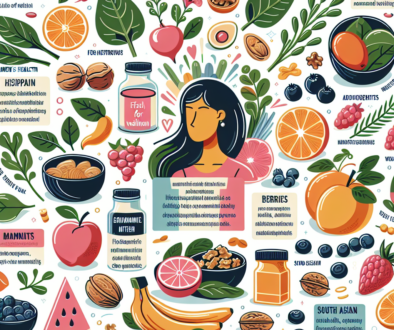Fixing Texture and Taste During Reformulation
-
Table of Contents
- Reformulating for Better Texture and Taste: Strategies and Solutions
- Understanding the Impact of Reformulation on Texture and Taste
- Strategies for Maintaining Texture
- Strategies for Preserving Taste
- Case Studies and Examples
- Utilizing Technology and Consumer Feedback
- Statistics and Market Trends
- Conclusion: Key Takeaways for Successful Reformulation
- ETChem’s Protein Products: Enhancing Texture and Taste in Reformulation
Reformulating for Better Texture and Taste: Strategies and Solutions

Food and beverage manufacturers are constantly challenged with the task of reformulating products to meet various objectives, such as improving nutritional profiles, accommodating dietary restrictions, or reducing costs. However, altering a product’s formulation can have unintended consequences on its texture and taste, which are critical factors in consumer acceptance and preference. This article explores the strategies and solutions for fixing texture and taste during reformulation, ensuring that products remain appealing to consumers while meeting the desired reformulation goals.
Understanding the Impact of Reformulation on Texture and Taste
Before diving into solutions, it’s essential to understand how reformulation can affect a product’s sensory attributes. Changes in ingredients can alter the physical properties of a product, leading to differences in mouthfeel, consistency, and flavor. For example, reducing sugar or fat content can significantly impact the creaminess and sweetness of a product, while substituting gluten-containing grains with gluten-free alternatives can affect the product’s structure and chewiness.
Strategies for Maintaining Texture
- Hydrocolloids and Gums: These ingredients can help mimic the mouthfeel of fats and improve the stability of emulsions. They are often used in low-fat or dairy-free products to maintain creaminess.
- Protein Fortification: Adding proteins can enhance the texture and nutritional value of products. Different types of proteins, such as whey, soy, or pea, can be used depending on the desired outcome and dietary considerations.
- Fiber Additives: Fibers can provide bulk and improve the mouthfeel of reduced-calorie products. They can also help in maintaining the structure in baked goods when reducing sugar or fat.
Strategies for Preserving Taste
- Flavor Masking: When reducing sugar, salt, or fat, flavor masking agents can help cover any off-flavors that may arise from the use of alternative ingredients.
- Flavor Enhancers: These compounds can intensify the existing flavors in a product, allowing for a reduction in added sugars or salt without compromising taste.
- Natural Sweeteners: In place of sugar, natural sweeteners like stevia or monk fruit extract can provide sweetness with fewer calories and without the negative health impacts of refined sugars.
Case Studies and Examples
Several companies have successfully reformulated their products while maintaining or even improving texture and taste. For instance, a well-known yogurt brand managed to reduce sugar content by 25% by incorporating natural sweeteners and carefully adjusting their flavor profile. Another example is a bakery that replaced traditional wheat flour with a blend of gluten-free flours and xanthan gum to maintain the texture in their bread products.
Utilizing Technology and Consumer Feedback
Advancements in food technology, such as high-pressure processing and microencapsulation, have provided new ways to preserve texture and taste during reformulation. Additionally, leveraging consumer feedback through taste tests and focus groups can guide product development to ensure that the reformulated products meet consumer expectations.
Statistics and Market Trends
Consumer demand for healthier products is on the rise, with a significant portion of the population seeking reduced sugar, low-fat, and gluten-free options. According to a report by Grand View Research, the global healthy snacks market size was valued at USD 78.13 billion in 2020 and is expected to grow at a compound annual growth rate (CAGR) of 4.2% from 2021 to 2028. This trend underscores the importance of successful reformulation in the competitive food industry.
Conclusion: Key Takeaways for Successful Reformulation
In conclusion, fixing texture and taste during reformulation requires a multifaceted approach that includes understanding the impact of ingredient changes, utilizing various strategies to maintain sensory attributes, and incorporating consumer feedback. By carefully considering these factors, manufacturers can create products that not only meet health and dietary goals but also satisfy consumer preferences.
ETChem’s Protein Products: Enhancing Texture and Taste in Reformulation
When it comes to reformulating products with improved texture and taste, ETChem’s protein products can play a pivotal role. Their high-quality collagens, including marine, fish, bovine, and chicken collagen, offer neutral taste and instant solubility, making them ideal for a wide range of applications. Whether you’re looking to enhance the protein content of your products, improve texture, or develop new health and wellness offerings, ETChem has the solutions to support your reformulation efforts.
About ETChem:
ETChem, a reputable Chinese Collagen factory manufacturer and supplier, is renowned for producing, stocking, exporting, and delivering the highest quality collagens. They include marine collagen, fish collagen, bovine collagen, chicken collagen, type I collagen, type II collagen and type III collagen etc. Their offerings, characterized by a neutral taste, instant solubility attributes, cater to a diverse range of industries. They serve nutraceutical, pharmaceutical, cosmeceutical, veterinary, as well as food and beverage finished product distributors, traders, and manufacturers across Europe, USA, Canada, Australia, Thailand, Japan, Korea, Brazil, and Chile, among others.
ETChem specialization includes exporting and delivering tailor-made collagen powder and finished collagen nutritional supplements. Their extensive product range covers sectors like Food and Beverage, Sports Nutrition, Weight Management, Dietary Supplements, Health and Wellness Products, ensuring comprehensive solutions to meet all your protein needs.
As a trusted company by leading global food and beverage brands and Fortune 500 companies, ETChem reinforces China’s reputation in the global arena. For more information or to sample their products, please contact them and email karen(at)et-chem.com today.




